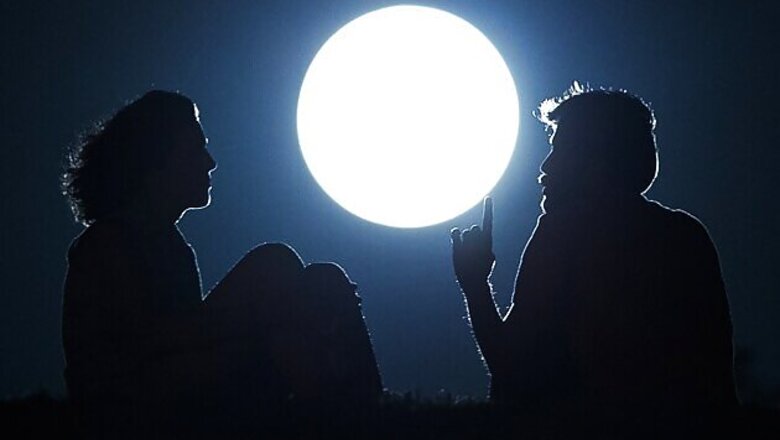
views
New Delhi: A supermoon rose above cities on Sunday night, the second of three times this year the full moon will orbit nearer the earth and appear unusually large and bright. The next supermoon is expected on September 9. The first of the three supermoons of summer 2014 was seen on July 12.
A supermoon is when the moon makes its closest approach to Earth in its orbit than usual. It appears as much as 14 per cent bigger and 30 per cent brighter.
The scientific term for the phenomenon is "perigee moon." Full Moons vary in size because of the oval shape of the Moon's orbit. The Moon follows an elliptical path around Earth with one side ("perigee") about 50,000 km closer than the other ("apogee"). Full Moons that occur on the perigee side of the Moon's orbit seem extra big and bright, explains NASA.
"Generally speaking, full Moons occur near perigee every 13 months and 18 days, so it's not all that unusual," says Geoff Chester of the US Naval Observatory. "In fact, just last year there were three perigee Moons in a row, but only one was widely reported."
In practice, it's not always easy to tell the difference between a supermoon and an ordinary full Moon. A 30 per cent difference in brightness can easily be masked by clouds and haze. Also, there are no rulers floating in the sky to measure lunar diameters. Hanging high overhead with no reference points to provide a sense of scale, one full Moon looks about the same size as any other.
The term supermoon came from astrologer Richard Nolle over 30 years ago in 1979. During the phenomenon, the Earth, moon and sun are all in a line, with the moon in its nearest approach to earth.
Prior to 1979, supermoons were called perigee full moon or perigee new moon.
####




















Comments
0 comment